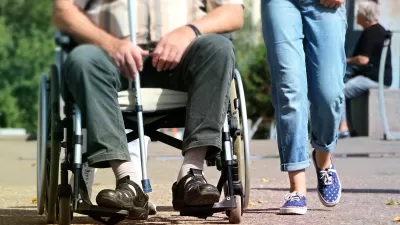The latest edition of the AARP Livability Index reveals the U.S. regions with more of the kinds of neighborhoods that offer quality of life benefits for residents of all ages.

Whitney Airgood-Obycki and Jennifer Molinsky share insights from the latest AARP Livability Index, co-authored with the Joint Center for Housing Studies of Harvard University.
"The AARP Livability Index offers a multifaceted approach to understanding what makes communities livable for people of all ages. The index is composed of seven categories: engagement, environment, health, housing, neighborhood, opportunity, and transportation. Each category includes several metrics drawn from publicly available data sources," according to the article's explanation of the Livability Index.
Among the geographic themes to emerge from the study are that the Northeast and the Midwest tend to have the most livable neighborhoods, according to Airgood-Obycki and Molinsky. More specifically: "In the Northeast region, 32 percent of neighborhoods are in the top national quintile, as are 24 percent of those in the Midwest, 20 percent in the West, and just 9 percent in the South."
"On average, block groups in the Northeast also have the highest overall livability score of 53.8, nearly 5 points higher than the average of 49.0 in the South. Northeastern communities score higher than all other regions in three categories: engagement, neighborhood, and transportation."
The article concludes with a call to action: that all neighborhoods can be livable, no matter where they are found. "The great benefit of the Index is that it enables communities to recognize the features they already have and identify areas for improvement."
FULL STORY: THE GEOGRAPHY OF LIVABILITY: INSIGHTS FROM AARP’S LIVABILITY INDEX

Alabama: Trump Terminates Settlements for Black Communities Harmed By Raw Sewage
Trump deemed the landmark civil rights agreement “illegal DEI and environmental justice policy.”

Planetizen Federal Action Tracker
A weekly monitor of how Trump’s orders and actions are impacting planners and planning in America.

Why Should We Subsidize Public Transportation?
Many public transit agencies face financial stress due to rising costs, declining fare revenue, and declining subsidies. Transit advocates must provide a strong business case for increasing public transit funding.

Understanding Road Diets
An explainer from Momentum highlights the advantages of reducing vehicle lanes in favor of more bike, transit, and pedestrian infrastructure.

New California Law Regulates Warehouse Pollution
A new law tightens building and emissions regulations for large distribution warehouses to mitigate air pollution and traffic in surrounding communities.

Phoenix Announces Opening Date for Light Rail Extension
The South Central extension will connect South Phoenix to downtown and other major hubs starting on June 7.
Urban Design for Planners 1: Software Tools
This six-course series explores essential urban design concepts using open source software and equips planners with the tools they need to participate fully in the urban design process.
Planning for Universal Design
Learn the tools for implementing Universal Design in planning regulations.
Caltrans
Smith Gee Studio
Institute for Housing and Urban Development Studies (IHS)
City of Grandview
Harvard GSD Executive Education
Toledo-Lucas County Plan Commissions
Salt Lake City
NYU Wagner Graduate School of Public Service




























